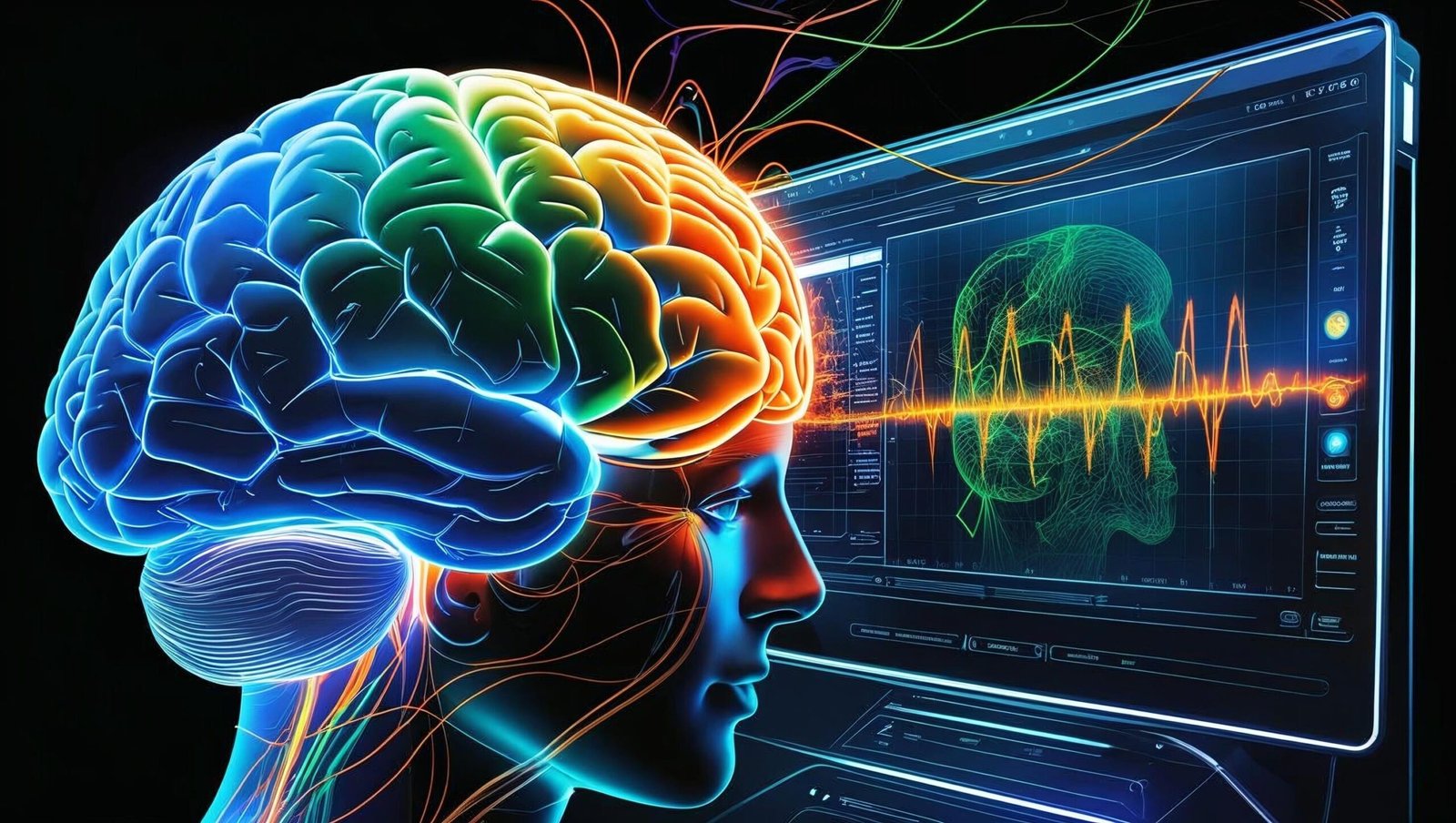Introduction
The Body Keeps the Score by Bessel van der Kolk is not merely a book. It is a scientific revelation, an emotional catharsis, and a revolutionary manifesto for understanding trauma. For those navigating the invisible aftermath of emotional, physical, or psychological wounds, this seminal work opens a gateway to healing.
In this long-form review, we shall explore seven deep truths this book unveils about trauma’s profound grip on the human psyche and physiology. Each truth will be unpacked with examples, reflections, and actionable takeaways.

Who Is Bessel van der Kolk?
Dr. Bessel van der Kolk is a pioneering psychiatrist, neuroscientist, and trauma researcher with over 40 years of clinical experience. Through his practice, he has treated war veterans, abuse survivors, and victims of domestic violence, cultivating profound insights into the lasting imprints of trauma. His life’s work culminates in The Body Keeps the Score by Bessel van der Kolk, now a New York Times Bestseller, translated into over 35 languages.
1. The Body Never Forgets — Even When the Mind Does
One of the core premises in The Body Keeps the Score by Bessel van der Kolk is that trauma is stored not just in memory, but within the physical body. Traumatized individuals often experience chronic pain, autoimmune diseases, and somatic symptoms without any identifiable cause. These physical responses are not imaginary — they are bodily memories.
For example, a war veteran may duck instinctively at the sound of fireworks. That reaction bypasses rational thought; it is embedded in the body’s protective systems. Healing, therefore, must involve more than just talk therapy — it must acknowledge the body as a vessel of memory.
2. Trauma Hijacks the Brain’s Emotional Regulation
The Body Keeps the Score by Bessel van der Kolk explains how trauma compromises the prefrontal cortex, the region responsible for rational thought and decision-making, while activating the amygdala, which governs fear. This hijack explains why trauma survivors often react disproportionately to triggers or relive traumatic events as though they are happening again.
Van der Kolk’s neurobiological lens provides clarity for misunderstood behaviors like emotional outbursts, shutdowns, or dissociation. He dismantles the stigma, showing that these are not flaws, but neurological adaptations to unbearable events.
3. Words Alone Cannot Heal Trauma
A poignant critique throughout The Body Keeps the Score by Bessel van der Kolk is the limited efficacy of conventional talk therapy. While language helps organize thought, trauma often silences the verbal brain. Survivors may find themselves unable to articulate what happened or how it affected them.
Van der Kolk advocates for holistic interventions that rewire both the brain and the body. These include:
-
EMDR (Eye Movement Desensitization and Reprocessing)
-
Yoga and breathwork
-
Neurofeedback
-
Theater and expressive arts
Such modalities engage the right hemisphere, stimulate sensory awareness, and offer non-verbal healing paths.
4. Childhood Trauma Reshapes the Brain’s Architecture
Among the most heartbreaking insights from The Body Keeps the Score by Bessel van der Kolk is how early trauma rewires a child’s developing brain. Children who grow up in unsafe environments — marked by neglect, violence, or emotional unavailability — internalize a world view rooted in danger.
Their attachment systems become disoriented. They may struggle with intimacy, trust, or emotional regulation throughout adulthood. Van der Kolk emphasizes the urgency of trauma-informed parenting, school environments, and public policy.

5. Trauma Is Not Just “In Your Head”—It’s In Your Nervous System
One of the most groundbreaking assertions in The Body Keeps the Score by Bessel van der Kolk is that trauma resides in the autonomic nervous system. People often live in a constant state of hypervigilance, unable to fully relax or feel safe, even in the absence of present danger.
This revelation explains the body’s resistance to logic or reason. Healing must involve techniques that calm the nervous system, restore a sense of agency, and rebuild safety from the inside out.
6. Trauma Disconnects Us from Our Bodies
Many trauma survivors are estranged from their bodily sensations. They may struggle to sense hunger, pleasure, or pain. The Body Keeps the Score by Bessel van der Kolk describes this as interoceptive numbness, which not only affects emotional wellbeing but also invites harmful coping mechanisms such as addiction or self-harm.
Practices like body scanning, grounding exercises, and trauma-sensitive yoga are offered as methods to gently reconnect individuals with their bodies. Healing is not linear, but possible through patience, safety, and somatic awareness.
7. Healing Is Possible — But It Demands Safety, Connection, and Community
In perhaps the most hopeful section of The Body Keeps the Score by Bessel van der Kolk, the author asserts that trauma is not a life sentence. With compassionate care, safe relationships, and science-backed interventions, even the most wounded can reclaim their lives.
Van der Kolk presents case studies of patients who, after years of suffering, experience profound transformation through therapies that validate their pain and restore their self-worth.
Beyond the Clinical: How The Body Keeps the Score by Bessel van der Kolk Impacts Society
While The Body Keeps the Score by Bessel van der Kolk functions as an academic and clinical treatise, its impact extends well beyond the boundaries of psychiatry. It compels a societal reckoning — a fundamental shift in how trauma is perceived, diagnosed, and treated across sectors like education, criminal justice, healthcare, and policy-making.
In educational institutions, children who exhibit behavioral challenges are often labeled as defiant or inattentive. Van der Kolk’s work pushes educators to consider: what if this behavior is not a choice, but a symptom of trauma? A student who cannot focus may be constantly scanning their environment for threats. A child who lashes out may be defending against unseen dangers. Recognizing the neurobiological underpinnings of trauma opens the door to empathy-based intervention.
In the criminal justice system, The Body Keeps the Score by Bessel van der Kolk sheds light on the alarming reality that many inmates are survivors of chronic childhood abuse and neglect. Punitive systems often reinforce trauma, while trauma-informed rehabilitation can offer a chance at redemption and reintegration. The book suggests we replace judgment with curiosity, and harsh sentencing with healing opportunities.
Public health initiatives also benefit from this knowledge. Addiction, obesity, chronic illness — all of these may have roots in unresolved trauma. Policymakers informed by The Body Keeps the Score by Bessel van der Kolk might prioritize early intervention, community-based healing centers, and support for at-risk families.
In essence, Van der Kolk invites us to restructure our societal scaffolding around trauma sensitivity — to build systems that heal, not harm.
Breaking the Silence: Personal Testimonies Inspired by the Book
Readers of The Body Keeps the Score by Bessel van der Kolk often find themselves confronted by buried memories, long-ignored emotions, or confusing physiological responses that suddenly begin to make sense. The impact of this book is not merely intellectual — it is existential.
Take the case of a middle-aged woman who had struggled for decades with panic attacks and digestive issues. Traditional medical tests yielded no conclusive results. After reading the book, she connected these symptoms to a history of childhood molestation she had long repressed. Her journey of recovery began not in a doctor’s clinic, but with the realization that her body had never stopped sounding the alarm.
Or the combat veteran who, after multiple failed therapy attempts, discovered the power of EMDR through Van der Kolk’s research. For the first time, he was able to revisit his trauma without being consumed by it.
These stories reinforce what The Body Keeps the Score by Bessel van der Kolk affirms repeatedly: trauma is not simply remembered — it is relived in the tissues, triggered by sounds, smells, movements, or even silence.

Interventions That Work: Practical Healing Methods from the Book
One of the book’s most appreciated qualities is its detailed examination of evidence-based interventions. Unlike many psychological texts that diagnose without offering solutions, The Body Keeps the Score by Bessel van der Kolk provides a rich catalog of healing techniques that restore bodily awareness and emotional regulation.
Let us delve deeper into some of these methods:
1. Eye Movement Desensitization and Reprocessing (EMDR)
Developed by Francine Shapiro, EMDR involves recalling traumatic memories while engaging in bilateral eye movements. This disrupts the intensity of those memories and reprocesses them in a less distressing way. Van der Kolk emphasizes EMDR’s power in rapidly diminishing trauma’s emotional charge.
2. Yoga and Movement-Based Healing
Yoga is more than physical exercise in this context — it becomes a tool for interoceptive awareness. Through mindful breathing and body alignment, individuals learn to feel safe within their own skin. According to The Body Keeps the Score by Bessel van der Kolk, yoga can regulate the autonomic nervous system and reduce PTSD symptoms more effectively than some medications.
3. Neurofeedback
This technique allows individuals to view real-time feedback of their brain’s electrical activity and learn to regulate it. It’s particularly useful for trauma survivors with attention, mood, or sleep disorders. Van der Kolk himself became a practitioner of neurofeedback after seeing its success where traditional therapy failed.
4. Internal Family Systems (IFS) Therapy
IFS operates on the idea that our psyche is composed of sub-personalities or “parts,” each with its own beliefs and roles. Trauma often forces certain parts into extreme protective roles. IFS helps individuals unburden these parts and restore inner harmony. The Body Keeps the Score by Bessel van der Kolk presents IFS as one of the most promising models for understanding complex trauma.

5. Theatrical Expression and Drama Therapy
Drama offers survivors a way to reclaim narrative control. When words fail, movement and role-playing allow them to externalize internal chaos. Van der Kolk’s work with the Trauma Center Theater Project illustrates how expressive arts can transcend verbal limitations and catalyze healing.
Each of these modalities affirms the central truth: healing must engage both mind and body.
Cultural Trauma and Collective Healing
While the book largely focuses on individual trauma, the implications of The Body Keeps the Score by Bessel van der Kolk extend to cultural trauma — the wounds borne by communities due to colonization, racism, war, genocide, and systemic oppression.
Whole populations may carry collective trauma across generations. This is seen in Native American communities, Holocaust descendants, and survivors of slavery and apartheid. These inherited wounds manifest in disproportionate rates of addiction, mental illness, and intergenerational violence.
Van der Kolk suggests that until such traumas are acknowledged and validated, true societal healing is impossible. This insight urges us to go beyond personal therapy and move toward collective rituals of reconciliation, storytelling, and justice.
The Body Keeps the Score by Bessel van der Kolk becomes not just a guidebook for individual healing but a roadmap for community restoration.
Critiques and Limitations
While The Body Keeps the Score by Bessel van der Kolk is groundbreaking, it is not without its critiques. Some scholars argue that it leans too heavily on anecdotal evidence. Others find Van der Kolk’s enthusiasm for certain therapies (like neurofeedback) somewhat premature, given the still-developing research.
Additionally, critics have raised concerns about the accessibility of some recommended therapies. Not every trauma survivor has access to EMDR specialists or can afford neurofeedback sessions. This highlights the broader issue of inequity in mental healthcare — a problem Van der Kolk himself acknowledges but cannot fully resolve in one book.
Still, these limitations do not diminish the book’s immense contribution. Even where scientific certainty is still evolving, the empathy and insight it provides are transformative.
Why This Book Endures
Since its publication, The Body Keeps the Score by Bessel van der Kolk has remained on bestseller lists and received widespread acclaim from professionals and lay readers alike. Its endurance is no accident.
In a world reeling from trauma — from pandemics, wars, abuse, displacement, and systemic injustice — the book resonates more deeply with each passing year. It offers not just a map of suffering, but a compass toward healing. It urges readers to honor their pain, not pathologize it. To listen to their bodies, not silence them. To seek safety, not stoicism.
Whether you are a trauma survivor, therapist, caregiver, educator, or simply a human being trying to understand others better, The Body Keeps the Score by Bessel van der Kolk is a beacon of hope and clarity.
Final Thoughts
To read The Body Keeps the Score by Bessel van der Kolk is to take a journey — not just into trauma, but into the resilience of the human spirit. It demands your attention, your compassion, and your courage. But what it offers in return is invaluable: a new language for your pain, a path forward, and a renewed trust in the possibility of healing.
If trauma has marked your life or the life of someone you love, this book may be the most generous and wise companion you could find. Begin with one chapter, one breath, one sensation. Your body remembers — but it also longs to heal.
And healing, as Van der Kolk teaches us, is always possible.

Personal Reflections
Reading The Body Keeps the Score by Bessel van der Kolk is not an easy journey. It can feel like gazing into the mirror of the soul. But with each chapter, one feels less alone. The science, combined with empathy and real-life stories, creates a sanctuary for understanding one’s own invisible wounds.
It compels readers to re-evaluate their own pain, observe how society pathologizes trauma, and join a collective call to humanize mental health care.
Key Takeaways
-
Trauma lives in the body and requires somatic healing.
-
Emotional dysregulation is a neurological response to past danger.
-
Healing requires more than words — it involves body-based practices.
-
Childhood trauma has lifelong impacts unless compassionately addressed.
-
Disconnection from the body is a defense mechanism, not a defect.
-
Safe environments, connection, and community are essential for recovery.
-
Recovery is possible — not quick, but deeply transformative.
FAQs
Q1. Is The Body Keeps the Score by Bessel van der Kolk suitable for beginners in psychology?
Yes. Although rooted in scientific research, the book is accessible and written with clarity, empathy, and real-life examples.
Q2. Can reading this book be triggering for trauma survivors?
Yes, for some. Van der Kolk discusses disturbing experiences. It’s advisable to read it slowly and seek support if it feels overwhelming.
Q3. What age group benefits most from this book?
Adults and older teens can benefit, especially those interested in psychology, mental health, or healing trauma.
Q4. What’s the most unique aspect of this book?
Its integration of neuroscience, psychiatry, and somatic therapies — offering a 360-degree view of trauma healing.
Q5. Where can I find further resources recommended in the book?
Van der Kolk lists therapies like EMDR, yoga, neurofeedback, and theater. You can find therapists trained in these methods or explore his official website for recommendations.
Conclusion
The Body Keeps the Score by Bessel van der Kolk is a monumental work in the fields of psychiatry, neuroscience, and healing. It redefines how we see trauma — not as a mental defect but as a natural response to unbearable life experiences. It demands that we shift from judgment to understanding, from silence to dialogue, from shame to empowerment.
For anyone seeking to understand their past, support a loved one, or reshape the future of mental health, this book is an essential guide.
If you’re on your own healing path or wish to understand the intricacies of trauma, start here — with this book, and with the courage to feel again.
For more insightful book reviews and in-depth wellness writing, visit
🌐 shubhanshuinsights.com — where every word is written to inspire clarity, healing, and transformation.